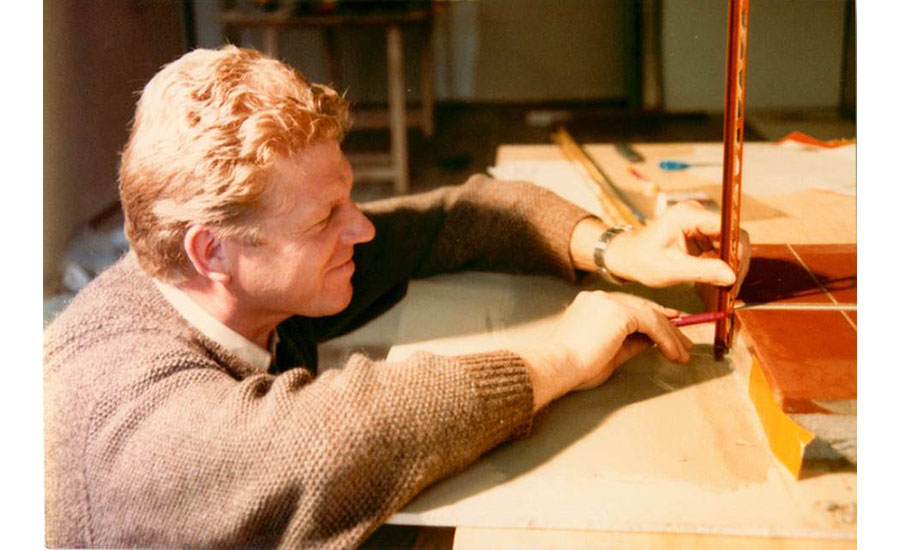PLATTSBURGH, NEW YORK – This year marks the 50th anniversary of Schluter-Systems, a company that has led important innovations and new product developments for tile installations globally.
In 1966, a young master tile setter named Werner Schlüter embarked on his first business venture-- founding Schluter Tile. A few years later, Schlüter developed a product that would revolutionize not only his work as a tile setter, but the industry as a whole –Schluter Schiene, a metal finishing profile designed to prevent tile edges from chipping. From these humble beginnings the company has evolved to a global organization with seven subsidiaries and 1,100 employees.
With its home base still in Iserlohn, Germany, and its largest North American facility located in Plattsburgh, NY, Schluter-Systems continues to thrive as a family-run business that reaches many countries around the world. Schluter-Systems North America set up shop in Plattsburgh in 1989 with two employees and a 13,000 square-foot warehouse. Today, Schluter-Systems occupies nearly 600,000 square feet of warehouse and office space throughout North America, and employs over 500 people continent-wide.
“I could not have imagined such a development at that time. It all began with five types of products made of brass,” said Schlüter. Over the next several decades, Schlüter led the company’s evolution from this first product to protect tile edges, to a portfolio of products designed to protect the integrity of tile installations from multiple angles: from underneath, at perimeters and transitions, and within large expanses. The Schluter line of products now consists of more than 10,000 different items.
Here are just some of the industry-changing ideas brought to fruition by Schluter-Systems:
1982: Drainage for all seasons
Designed for exterior balconies and terraces, the Schluter-Troba drainage system enables water to flow freely to the sloped waterproofing layer and on to the designated drainage area.
1985: Movement without cracks
The Schluter-Dilex profile series is introduced, allowing for the possibility of constructing long-term, maintenance-free movement joints within large expanses of tile.
1987: Uncoupling
One of the most influential advancements in the tile industry is the introduction of the uncoupling membrane, Schluter-Ditra. Ditra prevents any movement and stress that occurs in the subfloor from transferring through to the tile above, thus preventing cracked tiles and grout.
1987: Bonded waterproofing membrane
That same year, Schluter-Kerdi, a pliable sheet-applied bonded waterproof membrane hits the market. Unlike traditional waterproofing, Kerdi is bonded to the substrate and allows for the direct application of tile using the thin-set method.
1998: Continuous screed system
1998 welcomes Schluter-Bekotek, a lightweight modular screed system for producing permanent flooring assemblies that are free from cracks. Bekotek allows the installation of continuous screed surfaces without any control joints or wire reinforcement and accommodates hydronic radiant heating tubes.
2001: The integrated bonding flange
The revolutionary Schluter-Kerdi-Drain is developed with an integrated bonding flange that allows for a watertight connection to Kerdi, and other bonded waterproof membranes, at the top of the assembly.
2010: Substrate, building panel, bonded waterproofing
Schluter-Kerdi-Board building panels allow for the creation of a broad range of tile-ready substrates and building elements that are flat, level, plumb and square. Kerdi-Board is waterproof and temperature-resistant, lightweight and easy to handle and quick and easy to install.
2011: Low-profile linear floor drain
Schluter-Kerdi-Line is a low profile linear floor drain specifically designed for bonded waterproofing assemblies. Kerdi-Line can be installed adjacent to walls or at intermediate locations in showers, wet rooms and other applications that require waterproofing and drainage.
2014: Electric floor warming system with integrated uncoupling
Schluter-Ditra-Heat is the only electric floor warming system that directly incorporates uncoupling technology to ensure that heated floors aren’t susceptible to cracked tiles and grout. Cables can be placed wherever heat is desired for customized heating zones and no leveling compounds are required, for a quick and easy installation.
2016: A new alternative to tile baseboards
Schluter-Designbase is a great metal alternative to traditional baseboards as it features a clean, polished look, and is easily attached to the wall using a suitable adhesive, like Kerdi-Fix.
Schlüter’s motto has always been: “by the installer, for the installer.”
50 years later, these words continue to form the foundation of Schluter-Systems’ approach to all product development.






